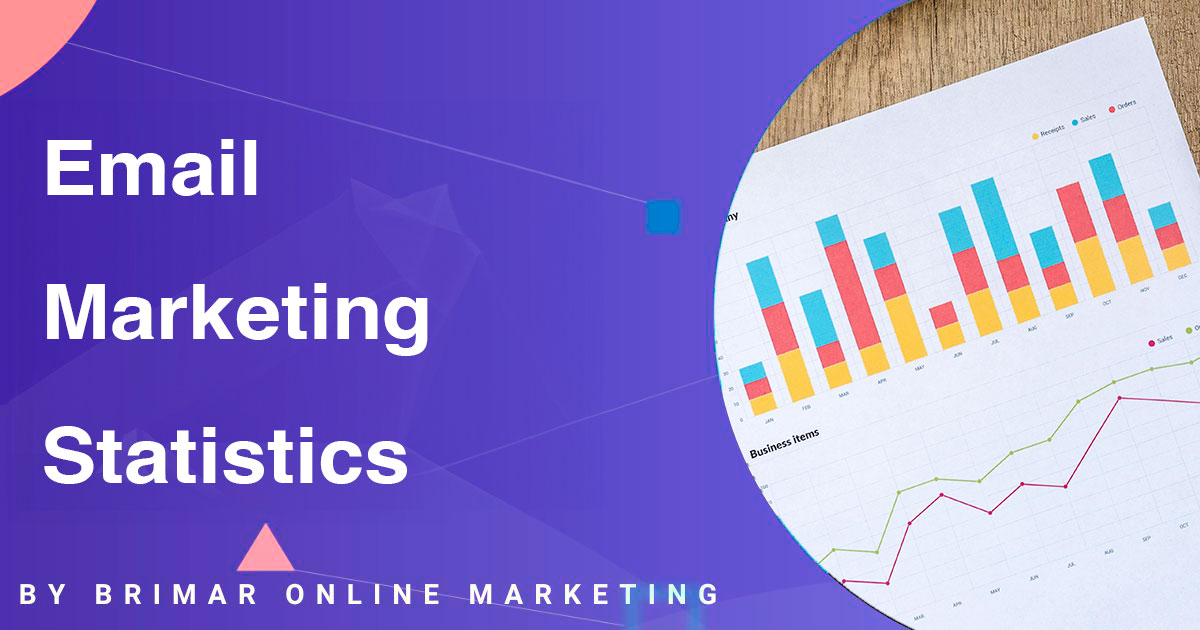
We’re diving into a topic that’s often underestimated but packs a serious punch in the world of digital marketing: email marketing.
Despite its classic vibe, email marketing is a powerhouse when it comes to engaging customers, driving sales, and keeping folks loyal to your brand.
So, let’s uncover some juicy stats that prove why email marketing is still king in the digital realm!
In this post, we’re diving deep into the world of email marketing statistics to uncover valuable insights that can supercharge your marketing efforts.
Whether you’re a seasoned marketer looking to fine-tune your email campaigns or a business owner eager to explore the potential of email marketing, you’re in the right place.
Let’s roll up our sleeves and discover why email marketing deserves a prime spot in your digital strategy toolbox.
Why Email Marketing Matters
In the vast ocean of digital marketing tactics, why does email marketing stand out?
The answer lies in its unparalleled effectiveness and return on investment (ROI).
While social media platforms and paid advertising campaigns certainly have their merits, email marketing offers a unique set of benefits that can’t be ignored.
First and foremost, email marketing is a powerhouse when it comes to building and nurturing customer relationships.
Unlike fleeting social media posts that quickly disappear from feeds, emails land directly in your audience’s inbox, providing a personalized touchpoint that fosters trust and loyalty over time.
Whether you’re sending out informative newsletters, exclusive offers, or personalized recommendations, email marketing allows you to connect with your audience on a deeper level.
But it’s not just about warm and fuzzy feelings—email marketing delivers tangible results where it matters most: the bottom line.
Studies consistently show that email marketing boasts an impressive ROI compared to other digital marketing channels.
For every dollar invested in email marketing, businesses can expect to see a significant return, making it a cost-effective way to drive sales and revenue.
Furthermore, email marketing serves as a powerful engine for brand awareness and visibility.
With carefully crafted email campaigns, you can showcase your brand’s unique value proposition, share compelling stories, and stay top-of-mind with your audience.
Whether you’re a small startup or an established enterprise, email marketing provides a level playing field to amplify your brand’s voice and reach a wider audience.
In summary, email marketing matters because it’s not just another marketing tactic—it’s a strategic powerhouse that drives results, builds relationships, and boosts brand visibility.
So if you haven’t already embraced the power of email marketing, now’s the perfect time to jump on board and unlock its full potential for your business.
Need a Sales Funnel that Converts?
Struggling to turn clicks into customers?
A high-converting sales funnel could be the missing link. We’ll help you build a simple, straightforward, and effective funnel that guides your visitors step-by-step, so they take action, not just browse.
Overall Email Marketing Stats
Email marketing continues to be a powerhouse in the digital marketing realm, driving results for businesses of all sizes across the globe.
Here’s a glimpse into some eye-opening statistics that highlight its growth and impact:
- Global Email Users: With billions of people connected to the internet worldwide, the number of email users has surged, reaching over 4.6 billion users. This staggering figure underscores the unparalleled reach and potential of email marketing campaigns to connect with diverse audiences.
- Volume of Emails Sent Daily: Every day, a whopping 319.6 billion emails are sent and received globally. This staggering volume speaks to the ubiquitous nature of email communication and the vast opportunities it presents for businesses to engage with their target demographics.
- Projected Growth: The email marketing industry shows no signs of slowing down, with experts forecasting continued growth in the coming years. By 2025, the industry is expected to surpass $22 billion in revenue, signaling a lucrative landscape for businesses investing in email marketing strategies.
Open Rate Statistics
When it comes to email marketing success, open rates play a pivotal role in determining the effectiveness of your campaigns.
Here’s why they matter, along with some insightful statistics and practical tips to boost your open rates:
- Importance of Email Open Rates: The open rate is a key metric that measures the percentage of recipients who open your email out of the total number of emails delivered.A high open rate indicates that your subject line and email content are resonating with your audience, driving engagement and potential conversions.
- Average Open Rates Across Industries: While open rates can vary depending on factors such as industry, audience demographics, and email content, industry benchmarks provide valuable insights.On average, open rates range from 15% to 25%, with some sectors achieving even higher rates.Industries like healthcare, education, and nonprofit organizations tend to have higher open rates, while retail and automotive sectors may see slightly lower rates.
- Tips for Improving Open Rates: Boosting your open rates requires crafting compelling subject lines and delivering relevant, personalized content.Consider using A/B testing to experiment with different subject lines and optimize for maximum impact.Segmenting your email list based on demographics, preferences, or past interactions can also enhance relevance and drive higher open rates.Additionally, timing plays a crucial role, so experiment with sending emails at different times to determine when your audience is most active and responsive.
Click-Through Rate (CTR) Statistics

Click-through rates (CTRs) are a vital metric in email marketing as they measure the effectiveness of your email campaigns in engaging recipients.
Essentially, CTRs indicate the percentage of email recipients who clicked on one or more links contained within your email.
Industry benchmarks for CTR can vary depending on factors like the type of email campaign, target audience, and industry.
On average, across industries, a CTR of around 2-3% is considered standard.
However, this figure can fluctuate significantly based on various factors.
For instance, sectors like retail and e-commerce tend to have higher CTRs due to the direct nature of their offerings, often ranging between 4-5%.
On the other hand, industries such as finance or healthcare may see lower CTRs, typically around 1-2%.
Boosting your CTR requires strategic thinking and attention to detail.
One effective strategy is to ensure your emails have clear and compelling call-to-action (CTA) buttons that prompt recipients to take action.
Make sure your CTAs stand out visually and are placed strategically within your email content.
Additionally, relevance is key to driving higher CTRs. Tailor your email content to suit the interests and preferences of your target audience.
Personalization techniques such as dynamic content or segmented targeting can significantly improve engagement and CTRs.
Conversion Rate Statistics
Conversion rates are a fundamental metric for measuring the success of your email marketing campaigns in driving desired actions, whether it’s making a purchase, signing up for a webinar, or downloading a resource.
Average conversion rates can vary depending on factors such as industry, audience demographics, and the specific goals of your campaigns.
Across industries, conversion rates typically range from 1-5%.
However, it’s essential to benchmark your conversion rates against your own historical data and industry standards to gauge performance accurately.
Different types of email campaigns can yield varying conversion rates.
For example, promotional emails promoting limited-time offers or discounts may have higher conversion rates than informational newsletters.
Transactional emails, such as order confirmations or shipping notifications, often have some of the highest conversion rates due to their direct relevance to the recipient’s recent actions.
Consider implementing tactics such as segmented targeting and A/B testing to increase your conversion rates.
Segmenting your email list based on factors like demographics, past purchase behavior, or engagement level allows you to deliver more targeted and relevant content to each segment, thereby increasing the likelihood of conversions.
A/B testing involves experimenting with different elements of your email campaigns, such as subject lines, CTAs, or email copy, to identify what resonates best with your audience and drives higher conversion rates.
By continually testing and optimizing your email campaigns, you can improve conversion rates over time and achieve greater success in reaching your marketing objectives.
Mobile Optimization Stats

Mobile optimization is no longer just an option; it’s a necessity in today’s digital landscape.
With the increasing use of smartphones and tablets, ensuring that your emails are optimized for mobile devices is crucial for reaching your audience effectively.
Importance of Mobile Optimization
In a world where people are constantly on the go, mobile devices have become the primary means of accessing emails.
Studies show that a significant portion of email opens now occurs on mobile devices, highlighting the importance of optimizing your emails for smaller screens.
Prevalence of Mobile Email Opens
According to recent data, more than half of all email opens occur on mobile devices.
This means that if your emails are not mobile-friendly, you could be missing out on engaging with a significant portion of your audience.
Best Practices for Mobile-Friendly Email Design
To ensure that your emails are optimized for mobile devices, consider the following best practices:
- Responsive Layouts: Design your emails using responsive templates that adapt to various screen sizes. This ensures that your content remains readable and visually appealing on any device.
- Concise Messaging: Keep your email content concise and to the point. Mobile users have shorter attention spans, so it’s essential to convey your message clearly and efficiently.
- Clear Call-to-Action (CTA): Make sure that your CTAs are easily clickable and prominently displayed. Use large, tappable buttons to encourage engagement from mobile users.
- Minimalistic Design: Avoid cluttering your emails with excessive images or text. Opt for a clean and minimalistic design that enhances readability on mobile screens.
Email Personalization Stats
Personalization has become a cornerstone of successful email marketing campaigns.
By tailoring your content to the specific needs and preferences of your audience, you can significantly increase engagement and drive better results.
Impact of Personalization on Email Performance
Studies have shown that personalized emails generate higher open and click-through rates compared to generic, one-size-fits-all messages.
Addressing recipients by name and delivering relevant content based on their interests and past interactions can help you create a more meaningful connection with them.
Effectiveness of Personalization Techniques
Dynamic content and segmentation are two powerful personalization techniques that can significantly enhance the performance of your email campaigns.
- Dynamic Content: By dynamically changing the content of your emails based on user data, such as location or past purchases, you can deliver highly targeted and relevant messages to each recipient.
- Segmentation: Segmenting your email list based on demographics, behavior, or preferences allows you to tailor your content to specific audience segments. This ensures that each recipient receives content that is relevant and valuable to them.
Successful Personalized Email Campaigns
Several brands have leveraged personalization effectively to drive engagement and conversions.
For example, e-commerce companies often send personalized product recommendations based on past purchases, while service-based businesses may customize their email content based on the recipient’s industry or job role.
Email Automation Statistics

Email automation is revolutionizing the way businesses approach their marketing strategies.
By leveraging automated email campaigns, companies can streamline their workflows and achieve greater efficiency in reaching their audience.
Here are some compelling statistics highlighting the benefits of email automation:
- Time Savings: On average, businesses that implement email automation save approximately 6 hours per week on their marketing tasks.
- Increased Revenue Studies show that businesses using email automation experience a 451% increase in qualified leads.
- Improved Engagement: Automated emails have an average open rate of 70.5%, significantly higher than traditional email campaigns.
These statistics underscore the transformative power of email automation in driving engagement, saving time, and ultimately boosting ROI for businesses of all sizes.
Enhancing Email Marketing Strategies for a Higher ROI
Welcome emails are among the first and most impactful opportunities to engage with subscribers.
These introductory messages set the tone for the relationship between your brand and new subscribers and often yield some of the highest email conversion rates.
Studies show that welcome emails boast a 50% open rate, making them an essential component of any strategy to increase the ROI of email marketing.
Email marketers know that timing is everything. Sending the right message at the right time can dramatically enhance email engagement.
Automated campaigns, such as abandoned cart reminders or special birthday offers, capitalize on moments when subscribers are most likely to take specific actions.
This approach improves the customer experience and helps brands achieve their business goals more efficiently.
Email marketing remains a powerful tool for small businesses to compete with larger competitors.
Although paid advertising typically requires a substantial investment, email marketing remains one of the best ways to attain a high ROI with low costs.
Recent email marketing ROI statistics suggest that businesses earn an average ROI of $36 for every $1 spent.
This statistic underscores the unparalleled potential of marketing emails in driving results.
One of the often-overlooked benefits of email marketing is its ability to nurture and grow a loyal customer base.
By consistently delivering relevant and valuable email newsletters, brands can stay top-of-mind with their audience.
These newsletters build trust and encourage repeat engagement, which is essential for improving email conversion rates and driving a higher ROI over time.
For B2B marketers, targeted campaigns play a critical role in addressing the unique needs of their audience.
Segmenting email subscribers based on factors like industry, job role, or company size ensures the content resonates deeply.
When done right, segmentation leads to increased engagement, making it one of the most effective strategies to maximize email ROI.
New subscribers often represent a fresh opportunity for brands to showcase their value proposition.
Businesses can create a personalized journey that drives deeper connections by tailoring onboarding sequences with educational content, exclusive discounts, or behind-the-scenes insights.
This thoughtful engagement significantly enhances the customer experience, leading to higher email engagement and more substantial conversion rates.
While every email campaign contributes to a broader strategy, not all emails are created equal.
Transactional emails such as order confirmations or shipment updates perform exceptionally well because they are timely and relevant.
Including subtle upsell opportunities within these emails can further boost the ROI of email marketing, turning routine communications into revenue-generating interactions.
Incorporating data-driven techniques is another way to elevate the performance of your marketing emails.
Businesses can refine their strategies by analyzing metrics such as open rates, click-through rates, and email conversion rates to align better with audience preferences.
Testing elements like subject lines, call-to-action placement, and email design ensures continuous improvement, resulting in a higher ROI.
Finally, delivering the right message at the right time cannot be overstated.
Whether a limited-time offer or an exclusive event invitation, well-timed marketing emails help brands stand out in crowded inboxes.
Leveraging these strategies offers small businesses looking to maximize their marketing budgets an incredible opportunity to connect with their audience and achieve measurable results.
By focusing on these techniques, email marketers can transform email campaigns into powerful tools for business success.
Conclusion
In this article, we’ve delved into key email marketing statistics that shed light on the effectiveness of email campaigns in today’s digital landscape.
These insights provide valuable guidance for optimizing your email marketing strategy, from open rates to conversion metrics.
By harnessing the power of email automation, businesses can streamline their marketing efforts, save time, and drive higher engagement with their audience.
The statistics presented here demonstrate the tangible benefits of adopting automated email campaigns, including increased revenue and improved customer relationships.
Remember to leverage these insights to your advantage as you continue to refine your email marketing strategy.
Whether you’re a seasoned marketer or just getting started, incorporating automation into your email campaigns can significantly impact your overall success.
Ready to take your email marketing to the next level?
Connect with Brimar Online Marketing today and start driving results with email automation.
Our Digital Marketing Services Have Helped Our Clients Increase Their Revenue!
“I highly recommend Brimar if your looking to grow your online business. You will be satisfied with the high level of expertise and high quality of services. It has helped my business grow by leaps and bounds.”
CEO
